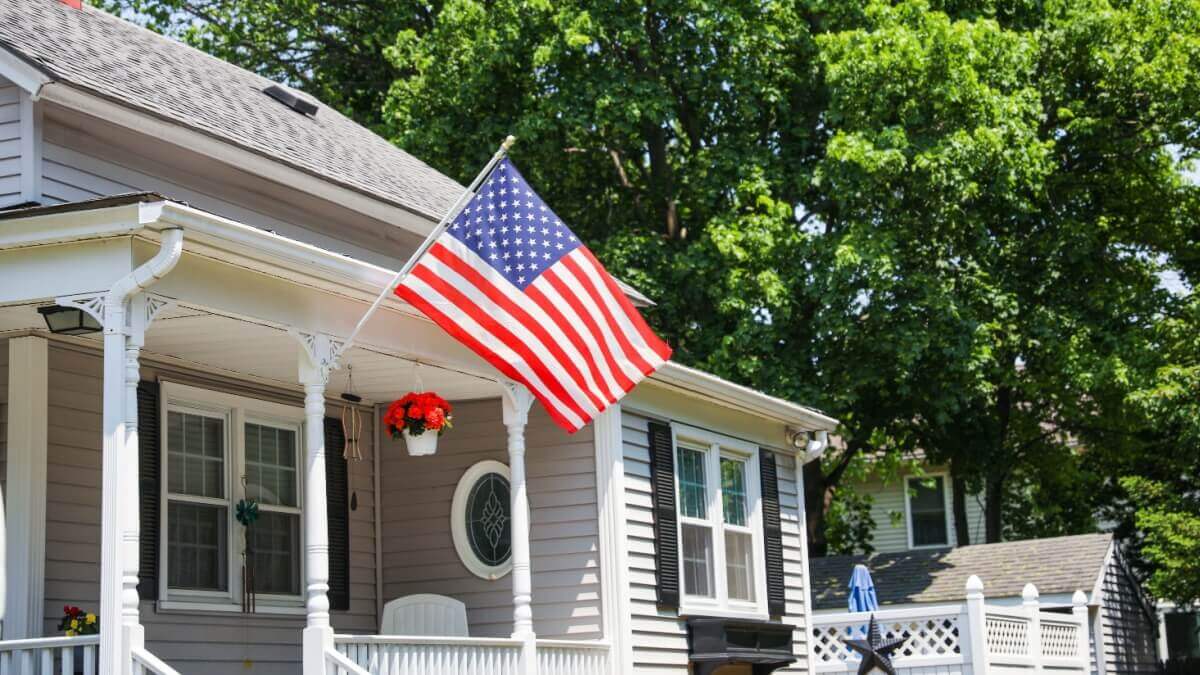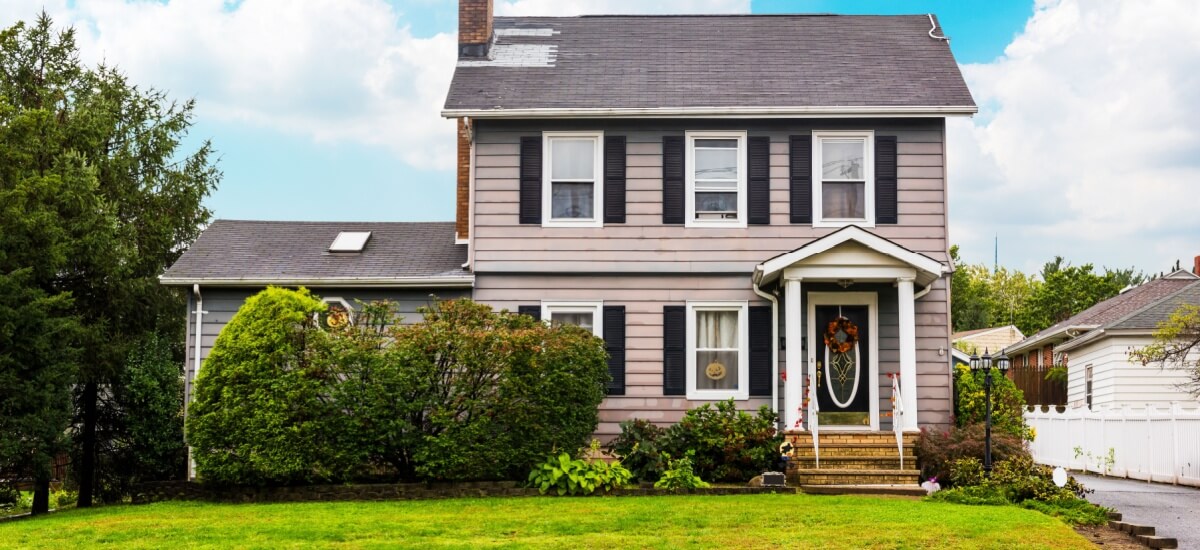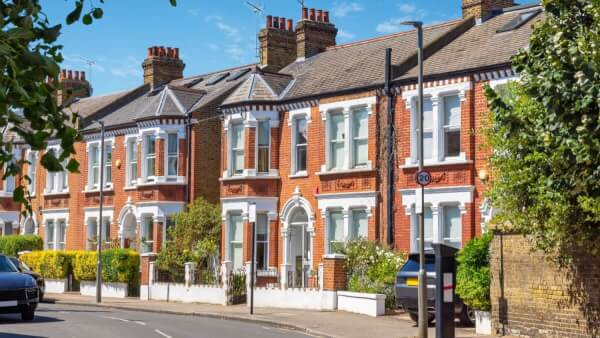Selling property in the UK as a non-resident: Complete guide
Read our comprehensive guide for non-residents selling UK property, including fees, taxes and timescales.

Moving to the US from the UK? Whether you’re still in the planning stages or you’ve already relocated across the pond, one of the most critical things on your to-do list will be finding somewhere to live.
If you plan to buy your own property in the United States, you’re likely to need a mortgage.
In this guide, we’ll cover everything you need to know about mortgages for foreigners in the USA. This includes how it works for UK expats, how easy/difficult the process is and what documents you’ll need. We’ll also run through some expat-friendly US banks and lenders to check out.
Also, if you’re looking for ways to save money on currency exchange when sending a down payment or mortgage fees to the US, check out the money services provider Wise. You can send large transfers with Wise for low fees* and great mid-market exchange rates - making it ideal if you’re sending a secure international transfer.
It is possible to get a mortgage in the US if you don’t live there, but it can be both difficult and complicated.
While you don’t need permanent residency to buy or sell property there, US lenders prefer to lend to US citizens and permanent legal residents. This is primarily because it’s much easier to look at the applicant’s credit history, creditworthiness and ability to make repayments.¹
So if you haven’t yet moved to the US, you may need to shop around quite extensively for a lender who’ll accept your application.
In most cases, you’ll also find that the requirements for application are more rigorous than for US nationals and residents. You might need more paperwork, and have to put up a bigger deposit (meaning you can’t borrow as much). And the mortgage you’re eventually offered may have higher interest rates.¹
It’s common for UK nationals to buy property in the US, with a mortgage from a US lender.
One crucial thing you’re likely to need though is a Green Card, as evidence of permanent residence. If you have this, you basically have all the same mortgage options as a US national. You may also be able to apply for a US mortgage as a Brit if you have a temporary residence permit.²
A number of US banks offer specialist mortgages aimed at international buyers, including people from the UK. For example, HSBC and Chase, both of which are banks operating in the US and the UK.
There are also Federal Housing Administration (FHA) mortgages. These are available for Green Card holders who may struggle to get a loan from a private lender, and usually only require a very small deposit.²
Eligibility criteria for mortgages will vary between lenders, and between states too.
But generally speaking, you’ll need to meet the following requirements as a UK citizen:²
If you meet the lender’s criteria, getting a mortgage in the US can be relatively straightforward. Be prepared for plenty of paperwork though, along with detailed questions about your income and spending habits.
However, there are some challenges that can make it more difficult. For example, you might not be able to get a mortgage if you have a poor credit history, a high debt-to-income ratio or gaps in your employment history. Self-employed people sometimes struggle to secure a mortgage.
According to research in 2023, US lenders have significantly tightened their lending standards recently. This could make it much harder to secure your mortgage.³
And for UK and other foreign nationals, there may be other obstacles to overcome. You may not have enough of a credit history in the US, or meet other requirements such as minimum salary or deposit.
You might need to show more documentation, or be asked for extra information - which can slow down the process.
To give you an idea of what to expect, here’s a step-by-step look at the process of applying for a US mortgage as a UK national:
Once this is done, you can get on with buying your property in the US.
| 💡 Read more: Taking cash in or out of the UK: What are the rules? |
|---|
The exact documents you’ll need to apply for a US mortgage loan as a non-resident will vary between lenders.
But here’s an idea of what you’re likely to need:⁴
On average, it takes anywhere between 30 to 60 days to get your formal mortgage offer after applying, with 49 days being about the average.⁵

Applying for a US mortgage comes with a few different fees, generally grouped together under the term ‘lender fees’.
They include application fees, origination fees and appraisal fees. Overall, they amount to around 1-2% of the amount you’re borrowing.⁶
This is the fee associated with applying for or completing your mortgage. It varies by lender, but can cost as much as $500.⁷ Some lenders don’t charge a fee, while others waive it if you already have products or accounts with them.
The origination fee is an upfront fee charged by US lenders to cover the costs of processing your application and issuing a loan. This is a little confusing, as some lenders also charge an application fee - which sounds like the same thing.
But specifically, the origination fee covers things like verifying your information and identity, and reviewing your application.
In some cases, the application fee will be bundled in with the origination fee.
It will usually be around 0.5% to 1% of the total loan amount.⁷
If the mortgage company needs to carry out a valuation of the property, they may charge an appraisal fee. It’s usually between $313 to $422.⁷
You may also encounter some of these other charges when applying for a US mortgage loan:⁷
All major banks and building societies in the US offer mortgage products, but they might not all have a service suitable for expats, or non-residents.
Which lenders you can choose from as a UK expat will mainly depend on whether or not you have a Green Card. If you’re a non-resident, you may struggle to find a lender. Ultimately, the decision about who is eligible for a mortgage or home loan is made by the lender.
If you live in the US or are visiting, you might want to pop into the local branches of banks which you’re interested in, for a chat about which products might suit you. Alternatively, you can enlist a broker to help.
The following banks could be your best bet for getting a mortgage in the US as a UK expat, as they have a presence in both countries:
Also, if you already bank with Chase in the UK, it could be worth getting in touch to see if they can help you secure a mortgage in the US.
| 💡 Read more: How to transfer large sums of money between bank accounts? |
|---|
Here’s a quick look at average mortgage interest rates in the US:⁹
| Mortgage type | Interest rate APR (as of Sep 2024) |
|---|---|
| 10 year fixed rate | 5.83% |
| 20 year fixed rate | 6.26% |
| 30 year fixed rate | 6.48% |
| 5/1 adjustable rate mortgage ARM (5 year term, rates change 1 time per year) | 6.97% |
| 10/1 adjustable rate mortgage ARM (10 year term, rates change 1 time per year) | 7.23% |
There are a couple of things to bear in mind though. Firstly, these average rates are accurate at the time of writing (05/09/24) but they change regularly. You’ll need to check the updated rates when you’re ready to apply for your mortgage.
The rate you’re offered will also depend on your circumstances and eligibility, the amount you’re borrowing and how much of a deposit you have. Non-residents can usually expect less preferential terms than residents and US citizens, which could mean higher interest rates.
It may be possible to get a mortgage in the UK to finance your property purchase over in the US. But not all UK banks and lenders offer what are often known as ‘overseas mortgages’.
Your best bet would be to try an international bank which operates in both countries, such as HSBC or Chase.
You could also look at remortgaging an existing property you own in the UK, borrowing more to raise funds for the US purchase. Crucially, you should only do this if you can afford the repayments. Seeking financial advice could be beneficial.
Yes, a number of banks and lenders offer Buy-to-Let mortgages in the US, although over there it’s known as 'Buy-to-Rent'.
These are mortgages designed specifically for buying US property as an investment, which you intend to rent out to tenants.
In the US, buy-to-rent mortgages tend to have higher interest rates, and you’ll need a deposit of at least 30%. You’ll also have to convince the lender that you can afford the repayments with your rental income, which can sometimes be difficult to do.²
It’s also possible to refinance a mortgage in the US, which is more commonly known as ‘remortgaging’ here in the UK.
You may want to do this to unlock equity from your home, lower your payments or shorten the term of your loan.
Refinancing can also help you borrow more money for a specific purpose, such as to buy another property or start a business. You’ll just need to make sure you can afford the repayments and aren’t overstretching yourself.

There are a few different mortgage types available in the US, and it’s important to choose the right one for your circumstances.
The main types to know about are - fixed-rate mortgages, adjustable rate mortgages (ARMs), government-backed mortgages and jumbo mortgages.
A fixed-rate mortgage has a fixed interest rate for a set period, which in the US is usually 15 or 30 years.
ARMs have interest rates which change over time. You’ll often start off with a low introductory rate, then this will change (down as well as up) at set intervals throughout the term of the loan. You can tell the loan term and the frequency of interest rate changes by the name of the product. For example, a 5/1 ARM has a five year term and the rate will change once a year.
If you are struggling to get finance elsewhere, possibly because you have a low credit score, you may be able to get a government-backed loan. These are provided by the Federal Housing Administration (FHA) and only require a small deposit, although you may need to pay mortgage insurance premiums.
As the name would suggest, this type of mortgage loan is designed for large purchases where you need to borrow more than about $750,000. Jumbo mortgage products usually have higher credit score and down payment requirements.
| 💡 Read more: The best UK banks for sending money abroad |
|---|
To stand the best chance of getting accepted for a US mortgage as a non-resident, bear these tips in mind:
If you’re sending your deposit and mortgage fees to the US from the UK, you may incur hefty transfer and exchange fees when converting your British pounds to the US dollars (USD). This is where Wise and the Wise account can help you save money.
Open a Wise account online and you can start managing your money in 40+ currencies (including GBP and USD). It’s not a bank account but offers many similar features.
Here’s an overview of the main benefits for using Wise: |
|---|
|
Sources used:
Sources last checked on date: 05-Sep-2024
*Please see terms of use and product availability for your region or visit Wise fees and pricing for the most up to date pricing and fee information.
This publication is provided for general information purposes and does not constitute legal, tax or other professional advice from Wise Payments Limited or its subsidiaries and its affiliates, and it is not intended as a substitute for obtaining advice from a financial advisor or any other professional.
We make no representations, warranties or guarantees, whether expressed or implied, that the content in the publication is accurate, complete or up to date.

Read our comprehensive guide for non-residents selling UK property, including fees, taxes and timescales.

Read our comprehensive guide to selling property in the US, including fees, taxes, timescales and a step-by-step guide to the process.

Read our comprehensive guide to selling property in Switzerland, including fees, taxes, timescales and a step-by-step guide to the process.

Read our comprehensive guide to selling property in Portugal, including fees, taxes, timescales and a step-by-step guide to the process.

Read our comprehensive guide to selling property in Malta, including fees, taxes, timescales and a step-by-step guide to the process.

Read our comprehensive guide to selling property in Australia, including fees, taxes, timescales and a step-by-step guide to the process.